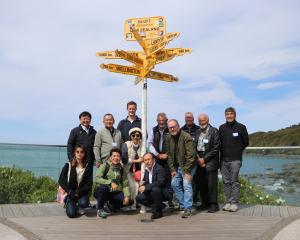
Site preparation work was undertaken on Tuesday using a bulldozer to move material so a cut could be made yesterday by an excavator to allow the flow of water between Waituna Lagoon and the sea.
Following consultation with mana whenua and the Department of Conservation, and weighing environmental and health and safety risks, Environment Southland used emergency works powers available to it under the Resource Management Act to mechanically open the Waituna Lagoon to the ocean.
Algae had bloomed in the lagoon and there were the highest levels of cyanobacteria measured in the Waituna Lagoon since testing began in 2014.
The bloom worsened between December 7 and January 10 sampling, but since that time algae conditions had not markedly changed.
The physical excavation work was expected to cost less than $20,000.
Environment Southland integrated catchment management general manager Paul Hulse said the lagoon was experiencing adverse environmental effects and the situation was likely to be further adversely affected if it remained closed.
Monitoring had identified there was a risk to ecosystem health if the lagoon remained closed, and the latest samples showed toxic algal bloom levels higher than any recorded previously.
The lagoon would be open for several weeks.
"While there is some uncertainty as to how effective this opening will be, our belief is that it is appropriate for us to take this action to seek to mitigate adverse effects on this internationally significant area," he said.
The area was an important habitat for birds, fish and eels and some unusual plant species.
The lagoon was also a significant trout fishery and a popular walking area.












